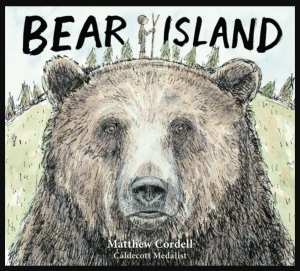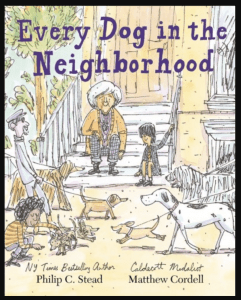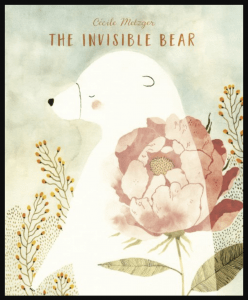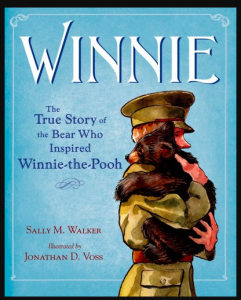Cordell, Matthew. Bear Island. New York: Feiwel and Friends, 2021.
Some picture books are wordless, like Forever Home: A Dog and Boy Love Story by Henry Cole. Some have illustrations to accompany the text, like Peg Bearskin by Philip Dinn. And others have illustrations that help tell the story, like this one: Bear Island. Even before the title page, five pages of pictures start the story of a little girl grieving the death of Charlie, her dog. Louise paddles a boat to a little island where she meets a bear who is also sad. All summer long, the two spend time together until winter arrives and it is time for Bear to sleep. “It’s not fair,” she thinks, “when the things we love must end.” But a glimpse of hope comes on the last page: an illustration of a new puppy. Created by the 2018 Caldecott winner, this introspective story of loss and new life is recommended for readers five to 10 years old.
Something to talk about: What do you learn from the pictures that isn’t told by the words?
Something to do: divide a collection of picture books into three categories: wordless, pictures that illustrate the words, pictures that help tell the story. What do you notice?
Tip: Books published by Feiwel and Friends are reliably wonderful. Watch for them!
A dog story illustrated by Matthew Cordell…
Stead, Philip C. Every Dog in the Neighborhood. New York: Holiday House, 2022.
If you like picture books, you probably already know that Philip Stead is a wonderful writer. If you’ve studied picture books, you already know that illustrations provide additional information to enhance the story. If you’re a teacher, you already like books that can be integrated into more than one subject. Well, this newest story by Stead is his most brilliant book yet. It’s as funny and heart-warming as the Moffat stories by Estes. Caldecott Medal winner Matthew Cordell’s illustrations are full of humorous details including a dog called E.B. who dreams of writing stories and a musician who owns two dogs called Thelonious and Monk. Younger students will be inspired to write their own letters and think of their own surveys to do after reading about Louis’s inventory of dogs. Older students will enjoy seeing how writers incorporate intriguing allusions requiring background knowledge to understand. Adults will appreciate Grandma’s complaints about city hall and how you sometimes just have to take care of things yourself. Highly recommended for everyone who likes picture books.




